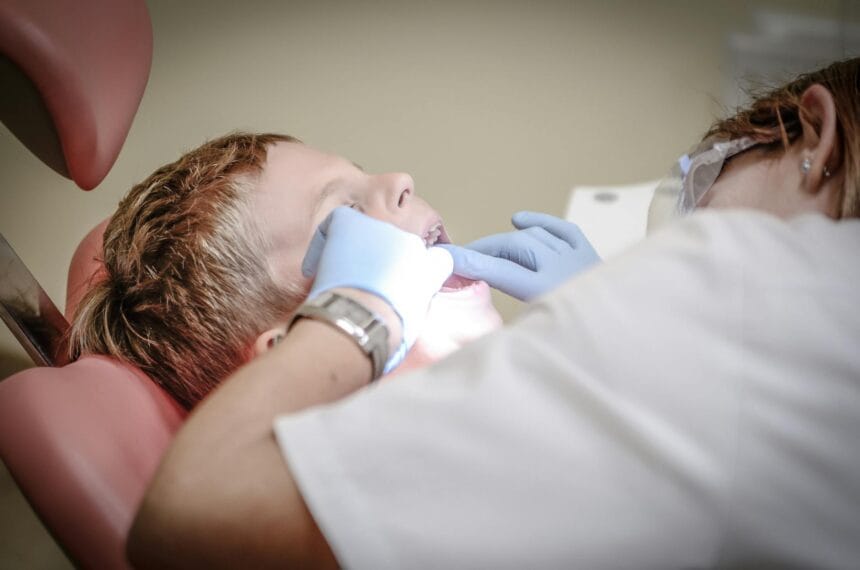Dental crowns are a type of dental restoration which completely covers and protects a tooth or a dental implant. Dental crowns are often necessary when a large cavity has destroyed a good portion of the tooth, leaving it easily fracturable. Dental crowns will restore its shape, strength, and improve its cosmetic appearance. Dental crowns are typically bonded to the tooth using a specialized dental cement (in dental implants they are sometimes screwed in place). Crowns can be made from many different types of materials. Dental crowns are generally custom fabricated using indirect methods.
Types Of Dental Crowns
Permanent dental crowns can be made from stainless steel, all metal (such as gold or another alloy), porcelain-fused-to-metal (also called a PFM crown), all resin, or all porcelain.
-Stainless steel. These short term use dental crowns are pre -formed metal shells.They are used on permanent or primary teeth generally for a few years, or as a temporary. The temporary crown protects the tooth or filling while a permanent crown is made from another material. For children’s teeth, a stainless steel crown is commonly used to fit over a tooth that’s been prepared to fit it. The crown covers the entire tooth and protects it from further breakdown. This type of dental crown also serves another purpose, to hold space in the mouth for the permanent teeth to move into. When the primary tooth eventually falls out of the mouth, the crown comes out with it.
-Metal Alloy. These dental crowns can include crowns made of gold , other precious alloys (for example,platinum, palladium), or a base-metal alloy or non-precious (for example, nickel or chromium). Purer gold is the softest yet easiest to get ideal fit, while non precious crowns are variable in hardness and strength. Non precious dental crowns tend to make the underlying tooth black as,over time, metals leach into the tooth, they may also have a very metallic taste. Metal dental crowns can be made very thin. This allows for minimal tooth structure to be reshaped in preparation for the crown. Another advantage is, that metal crowns are not as hard as porcelain. This “softness” causes much less wear on the opposing tooth. Metal dental crowns do not break or chip and tend to withstand biting forces well over time. However, metal crowns are not very cosmetic, can wear through, and generally are reserved for the areas not visible in the smile line.
-Porcelain-fused-to-metal (PFM). These dental crowns are the most widely and commonly used. They have the benefit of good fit and underlying strength from the metal.The underlying metal alloy may be any combination of precious or non precious as mentioned above. These dental crowns are more cosmetic, and are fabricated to match the color of the surrounding teeth. However, the porcelain outer layer will cause more wearing to the opposing teeth than a metal crown. The porcelain portion of the crown can also chip or break off over time. PFM dental crowns can be highly esthetic and look just like your natural teeth when prepared properly. Over time, with gum recession, a dark line may become visible at the gumline. This is the underlying metal of the crown. Depending upon where it is in the mouth, it may become a cosmetic problem. These dental crowns are able to be used for any teeth in the mouth.
-All ceramic, all porcelain, all resin. These dental crowns are the ultimate in cosmetic crowns. These provide better natural color match than any other crown type. These are also a good choice for patients with metal allergies of any kind. However, some are not as strong (example, Belle Glass) as porcelain-fused-to-metal crowns, some are stronger (example, Bruxzir crowns). These dental crowns tend to wear down opposing teeth more than metal crowns would. Because of the lack of metal, there will never be a black line to worry about. All porcelain crowns are the perfect choice for front teeth cosmetics, or any teeth that will be easily seen when smiling.
Dental Crown Tips
So, you have been told you need a crown to restore a tooth? The following are some things to ask or check on with your dentist to ensure you are receiving the highest quality care that will last over the long term:
–American Made? Many dentists save costs by resorting to using dental laboratories overseas in places like Costa Rica and China. They tend to be made with cheaper materials and lower quality recycled dental metals and porcelain. Ask your dentist where your crown is being fabricated, along with the laboratory slip to tell how much gold content or type of porcelain is being used.
–How long should it last? Is there any warranty for breakage? Dental crowns generally last between 10-15 years with proper oral hygiene, if a dental crown is made with inferior materials you can expect breakdown in half that time. Some labs will warranty a crown for up to a year. Especially important if you have chosen a ceramic, resin, or porcelain type crown. ask your dentist about this.
–Lab Created Provisional Dental Crowns. Sometimes to help you make decisions especially in a cosmetic area, a dentist may have a dental laboratory make a trial or provisional crown. This type of dental crown is generally made if there is healing required before the final processing of your new crowns. With lab created temporaries, you can literally see what your permanent crown (shape and color) will look like and whether it blends well with your smile. It also helps you determine if it is compatible with the health of your gum tissues and whether or not you can eat and talk normally. With a provisional crown (as opposed to a routine temporary crown), all the details are worked out ahead of time. There usually is an additional charge for this extra step as there will be a laboratory fee involved as well as extra chair time with dentist. Once you approve, your final crown is custom made to match the blueprint provided by the provisional, except that the final materials are stronger, of better quality, and look far more natural.
–Always ask to see the crown before it is placed permanently in the mouth! This should be something most dentists do anyway but not all will. You want to ensure shape and color are to your liking before it is placed in permanently. If the color is off or does not feel right voice your concerns. If you truly are not happy with something that cannot be adjusted chair side ask for the crown to be remade. Crown aesthetics can be very subjective, and their beauty is very much in the eyes of the beholder. Both your input and your dentist’s professional experience should come together in giving you the smile you want.
Conclusion
Each and very dentist has a professional responsibility to treat to the standard of care for a particular dental procedure. Even if some dentists may use inferior products or dental laboratories they are still responsible that the dental crown fits properly and functions as it should.
Not all dental crowns are made the same,and not all dentists, or their labs, have the same skill, training, or experience. A well trained dentist will have no problems preparing and inserting a good functioning dental crown. It takes a skilled dentist and lab to make it look natural, without anyone knowing you even have a crown in your mouth. Dentistry ultimately is an art and choosing the right dentist for you will create a happier, healthier smile.









